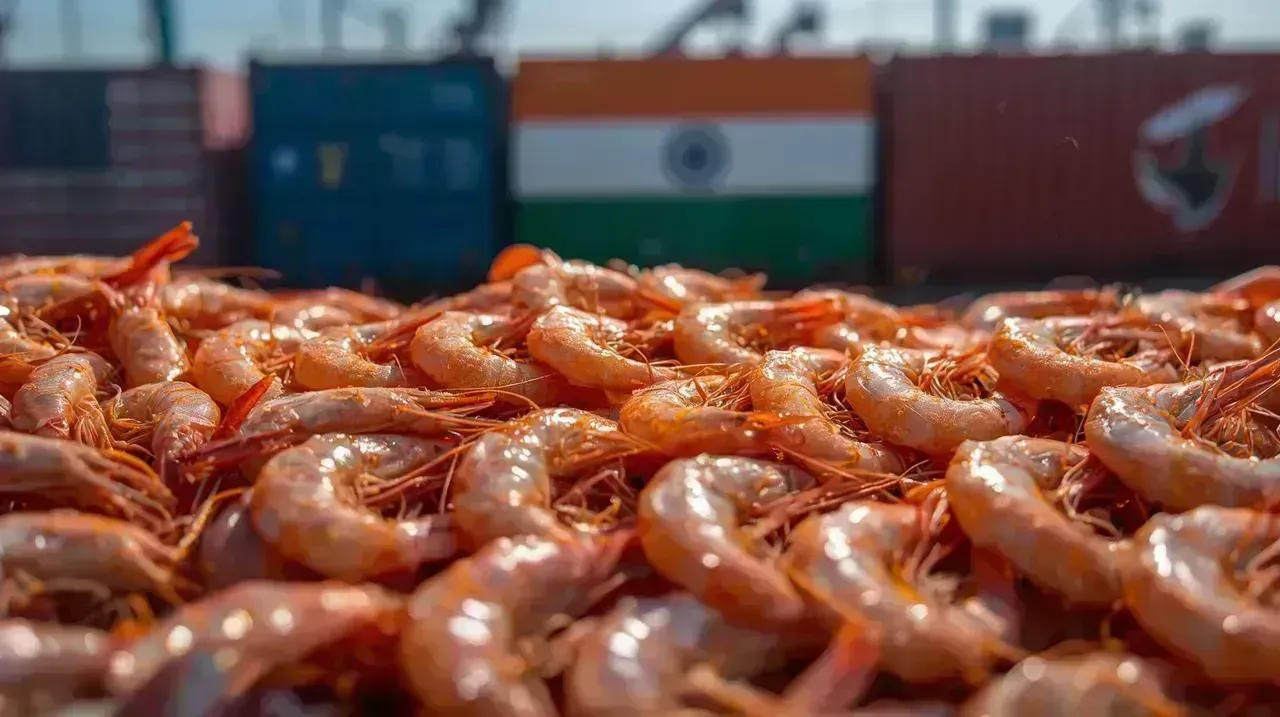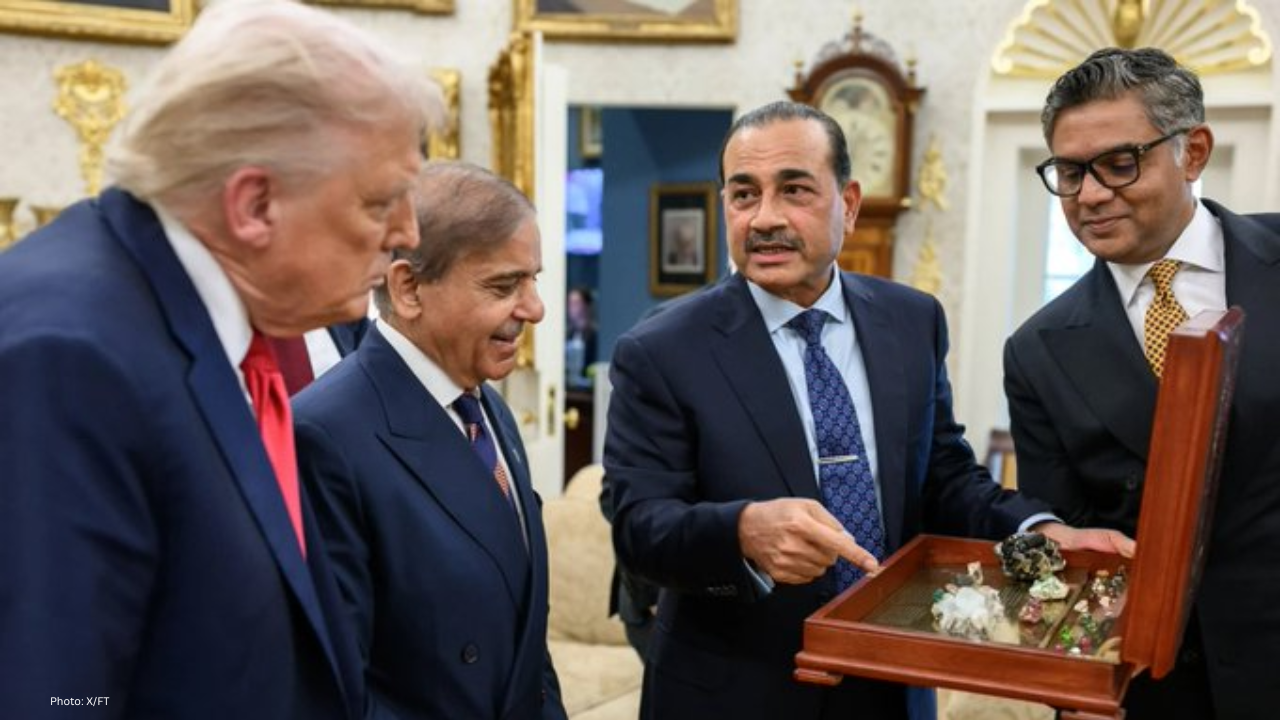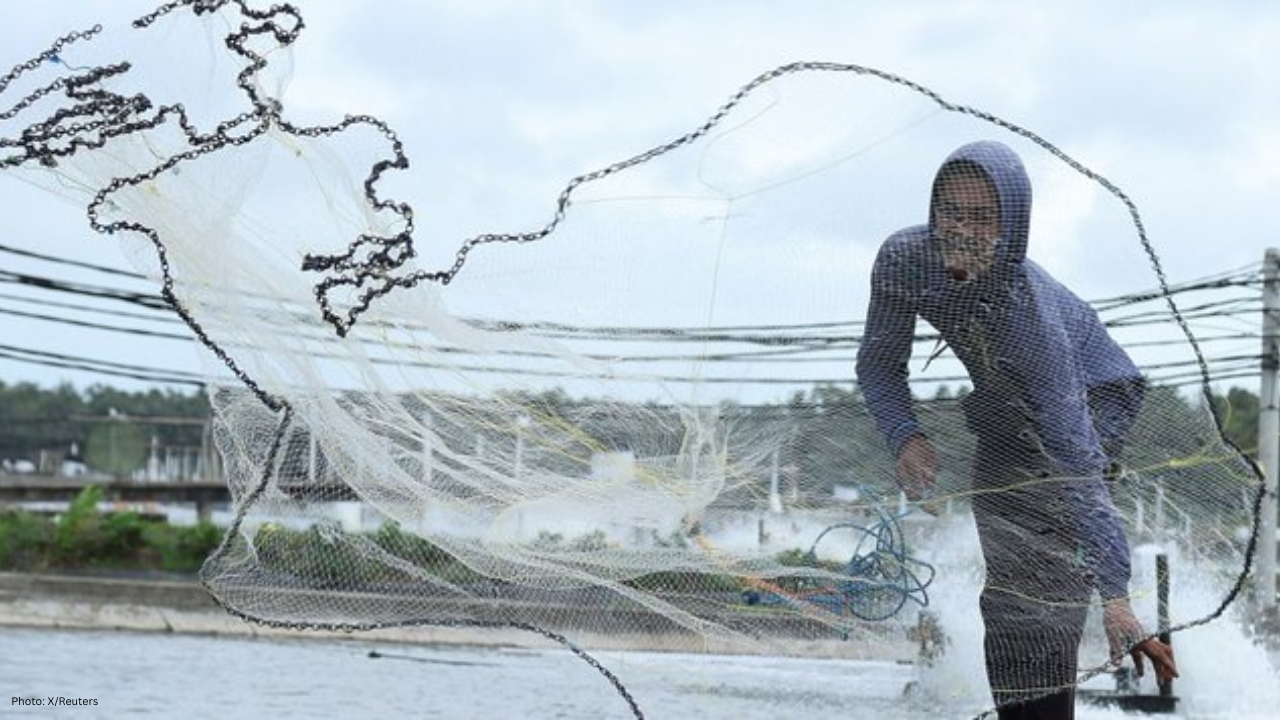
Join 10k+ people to get notified about new posts, news and tips.
Do not worry we don't spam!

Post by : Shivani
The trade relationship between India and the United States has entered a new phase of strain following the Trump administration’s decision to impose tariffs on Indian shrimp exports. The move, announced in late September 2025, has raised concerns among seafood exporters in India, policymakers in New Delhi, and global trade analysts who fear escalating tensions between two of the world’s largest economies.
Shrimp is one of India’s most valuable seafood exports, with the United States serving as its largest market. The new India US shrimp tariffs, which range from 10% to 25% depending on the product category, are expected to significantly impact India’s seafood industry, which employs millions of workers and contributes billions of dollars to the national economy.
The Trump tariffs on shrimp exports are part of a broader protectionist trade agenda. The administration has long claimed that India’s shrimp exports benefit from government subsidies and unfair trade practices, creating an uneven playing field for American producers. The new tariffs aim to support domestic shrimp farming in the US, particularly in states like Louisiana, Texas, and Florida.
However, Indian officials strongly dispute these allegations, maintaining that their seafood industry complies with international trade regulations. They argue that the US seafood trade dispute is politically motivated and could severely damage long-standing India US trade relations.
India exported nearly $8 billion worth of seafood in 2024, with shrimp accounting for over 70% of the total. The United States imported more than $5 billion of this, making it India’s largest shrimp market. With the shrimp tariffs in place, exporters are bracing for:
Reduced demand for Indian shrimp in the US market.
Lower income for farmers and seafood processors.
Job losses in coastal states like Andhra Pradesh, Tamil Nadu, and Odisha, where shrimp farming in India plays a vital role in rural livelihoods.
With competitors like Vietnam, Thailand, and Ecuador not facing similar tariffs, Indian shrimp exporters fear losing market share.
In response, the Indian government has condemned the tariffs as “unjustified and harmful to global trade.” Officials are considering filing a WTO shrimp case, challenging the legality of the US decision under international trade law.
India is also pushing to diversify seafood export markets by exploring opportunities in Europe, the Middle East, and East Asia. This market shift could help reduce India’s dependence on US shrimp demand and limit the damage of the current restrictions.
The tariffs also reflect the Trump administration’s effort to bolster political support in the US South. Domestic shrimp farmers in the United States, particularly in traditional coastal industries, have complained for years about being undercut by cheaper imports.
Industry groups in the US have welcomed the tariffs as a measure to “level the playing field,” though consumer advocacy organizations caution that they could lead to higher seafood prices for American consumers.
This India US shrimp dispute is not an isolated incident—it echoes previous clashes over tariffs on steel, aluminum, and agricultural products. As global trade tensions rise, the risk of retaliatory tariffs looms. India may consider counter-tariffs on US goods, further intensifying the trade conflict.
Indian exporters and industry leaders have expressed deep concern. “This decision will hurt not just exporters but also millions of small farmers who depend on shrimp farming in India for their livelihood,” said one seafood industry representative.
Others, however, see the disruption as a wake-up call. “The short-term impact will be painful, but this could be an opportunity to innovate and diversify India’s seafood export markets,” said another exporter.
Trade experts suggest several potential developments in the coming months:
Negotiations: India and the US could initiate diplomatic talks to ease tensions and possibly revise the tariffs.
WTO Complaint: India may proceed with a formal complaint through the WTO, although a resolution could take years.
Market Diversification: India may accelerate its expansion into new shrimp markets outside the US.
Retaliation: India could impose countermeasures on American imports, fueling further global trade tensions.
The India US shrimp tariffs represent a serious challenge for both nations’ economies. While intended to protect shrimp farming in the US, the move risks severely damaging India’s shrimp export industry and worsening India US trade relations. As the world watches how these two major economies navigate the dispute, the implications for global commerce and WTO enforcement will be significant.










JioHotstar Launches ‘Pitch To Get Rich’ Reality Show for Fashion Startups
JioHotstar’s new show ‘Pitch To Get Rich’ features 14 fashion startups competing for Rs 40 crore fun

Kantara Chapter 1 Box Office Day 1 Rishab Shetty Film Hits ₹60 Cr
Rishab Shetty’s Kantara Chapter 1 collects ₹60 crore on Day 1, breaking records across India with hu

FIA Declares Heat Hazard for Singapore F1 Race Due to Extreme Heat
FIA applies heat hazard rule for Singapore Grand Prix as high heat and humidity challenge F1 drivers

Trapeze Artist Dies After Fall at German Circus Show
A 27-year-old trapeze artist died in Germany after falling during a circus show. The tragic accident

Dhanashree Verma Reveals Yuzvendra Chahal Cheated Early in Marriage
Dhanashree Verma opens up on her divorce from Yuzvendra Chahal, revealing he cheated within months o

Aishwarya Rai with Aaradhya Spotted in Paris Ahead of Fashion Show
Aishwarya Rai Bachchan and daughter Aaradhya spotted in Paris ahead of L'Oréal Paris Fashion Week, d